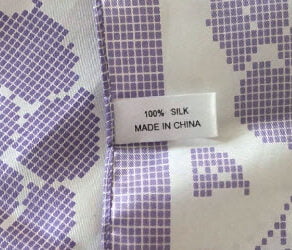Michelle asked: How do I clean an oil stain from kitchen tiles? I think they are terracotta tiles. I spilled some sesame oil in a shopping bag and the bag was on the floor for quite awhile. I’ve only just noticed. What’s the best way to clean the oil from the tiles without damaging them? I don’t have time to order anything off the internet.
Terra-cotta stains can be tricky because the terra-cotta is so porous that the stains go much deeper than the surface. In order to pull the stains out of the tile, you will need something to absorb the oil. In this case, we’ll utilize a poultice. A poultice is an absorbent material that is placed on the surface to draw out the stain. While there are many commercial poultice powders available, it is possible to make them at home using items you likely have your house. Follow the steps to make your own poultice and draw the stain out of the tiles.
stains can be tricky because the terra-cotta is so porous that the stains go much deeper than the surface. In order to pull the stains out of the tile, you will need something to absorb the oil. In this case, we’ll utilize a poultice. A poultice is an absorbent material that is placed on the surface to draw out the stain. While there are many commercial poultice powders available, it is possible to make them at home using items you likely have your house. Follow the steps to make your own poultice and draw the stain out of the tiles.
You Will Need:
- Ammonia (optional)
- Powdered whiting (available at hardware and home improvement stores)
- Water
- Sponge
- Hydrogen peroxide
- Acetone
- Paper towels
- Soft cloths
Steps to Remove the Stain:
- Begin by cleaning the surface of the oil stain with a sponge that has been slightly moistened with warm water. If the stain is severe, you may want to try and remove some of the surface oil with a small amount of ammonia. Rinse the area well after doing so.
- Dry the area completely with a soft cloth.
- Next, mix the powdered whiting and hydrogen peroxide together to form a thick paste.
- Spread a thick layer of the paste over the stain.
- Allow it to dry completely on the stain before removing.
- If it seems to be drying too fast, place a sheet of plastic wrap over the area and tape it down around the edges. This will allow it to dry out over the course of a day or two which can make it more effective.
- When the poultice has dried, wipe it away.
- If you require a second option, acetone can also be used.
- Begin by folding a thick layer of paper towels large enough to cover the stained area.
- Moisten the paper towels with acetone and lay them over the stain.
- Acetone evaporates quickly, so this will require covering it to keep it moist. Place a layer of plastic wrap over the paper towels and tape around the edges to seal it.
- Allow this to set on the stain until it has dried completely.
- Remove the plastic and paper towels and wipe the area clean using normal cleaning methods.
- Repeat if necessary.
Additional Tips and Ideas
- Terra-cotta will react differently to the poultice depending on the sealant, if any, and the condition/age of the tiles. It is always wise to test a small, hidden area first to ensure that there are no unwanted effects to the color or surface of the tile.
- If the homemade poultice does not get out the oil stain, it may be necessary to purchase a poultice powder stain remover. There are powders designed specifically for stone and can be found at many hardware and home improvement stores. Simply mix and apply following the manufacturer’s instructions.
- Avoid using acids to remove the oil stain as they can damage the surface of the stone.









How do you remove coconut oil from outdoor saltillo tiles?
Linda,
Saltillo tile is a kind of terracotta tile, so these steps should work! Good luck!
Source: Wikipedia – Saltillo Tile